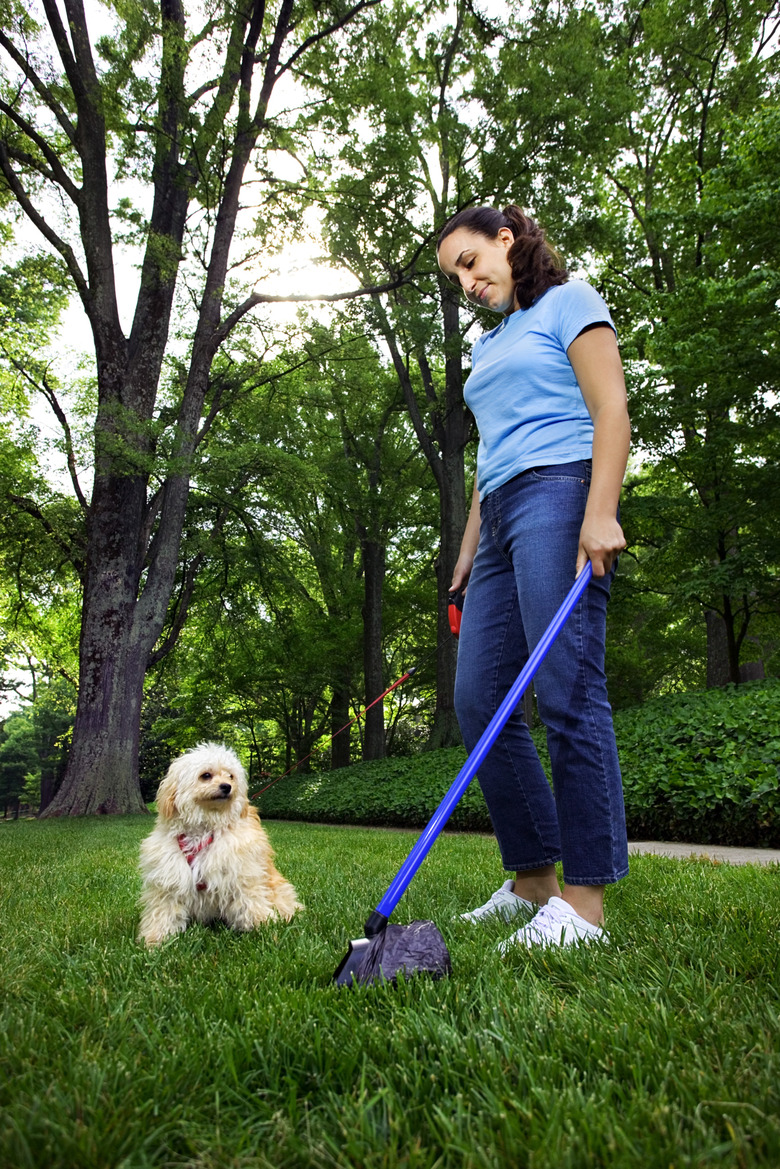The Most Eco-Friendly Way To Dispose Of Dog Waste
Cleaning up after your dog may not be fun, but it's important if you care about the health of your community and the environment. When dog waste is left on the lawn or curb, it gets washed away by rain or sprinkler water into storm drains, and from there it ends up in runoff. Dog waste sometimes contains pathogens — organisms that cause disease — so leaving it on your lawn or curb can introduce these pathogens into the area and local waterways. At the end of the day, there are much better options for removing your dog's waste.
Compost
Compost
There is no one best option for dealing with dog waste as each one has both pluses and minuses. Nonetheless, there are several options that are more eco-friendly than leaving it on your lawn. One of these is adding the waste to your compost pile. The advantage is that instead of wrapping your dog's waste in plastic and mummifying it in a landfill, you can use the composted waste on your ornamental plants. The disadvantage is that the temperatures in the compost pile aren't hot enough to kill the pathogens in your dog's waste.
Flushing
Flushing
You can also flush your dog's waste down the toilet. Sewer and septic systems treat the pathogens in your dog's waste and thereby prevent environmental pollution. This, however, is an undesirable alternative for cat waste, because certain pathogens found in cat poop can potentially survive the wastewater treatment process, unlike dog waste. One disadvantage is that if you flush the waste while it is inside a plastic bag, it will ultimately end up in the waste stream because the plastic is nonbiodegradable. The bag may also clog the plumbing.
Burial
Burial
Burying your dog's waste ensures it will biodegrade in a place where any pathogens it contains won't re-enter local waterways. If you're going to bury it, wrapping it in plastic won't help, however, because the plastic is nonbiodegradable and will remain where you buried it. Biodegradable corn bags are one viable option. It's also important to make sure the water table isn't high enough to carry the remains of your dog's waste into the groundwater.
Trash
Trash
Throwing your dog's waste in the trash is another option. It's definitely preferable to leaving waste on the lawn because it doesn't carry pathogens into local waterways. But throwing away waste wrapped in plastic does mean you're generating more plastic waste that won't biodegrade — and that's not environmentally friendly either. One option is to use biodegradable corn-based plastics. Although these are unlikely to break down quickly in the oxygen-poor environment of a landfill, they are at least made from renewable resources.
Cite This Article
MLA
Brennan, John. "The Most Eco-Friendly Way To Dispose Of Dog Waste" sciencing.com, https://www.sciencing.com/ecofriendly-way-dispose-dog-waste-2238/. 24 April 2017.
APA
Brennan, John. (2017, April 24). The Most Eco-Friendly Way To Dispose Of Dog Waste. sciencing.com. Retrieved from https://www.sciencing.com/ecofriendly-way-dispose-dog-waste-2238/
Chicago
Brennan, John. The Most Eco-Friendly Way To Dispose Of Dog Waste last modified March 24, 2022. https://www.sciencing.com/ecofriendly-way-dispose-dog-waste-2238/
